Veins are one of the most important parts of our body. There are at least 34 major veins in our body. And let’s not forget about the countless smaller veins. The importance of veins is significant in medical care too.
Venepuncture and
phlebotomy are the primary steps.
Whether you are visiting the emergency room or doing a general check-up, you will always have to do bloodwork. It is why all medical practitioners doing phlebotomy or venepuncture must know everything about
anchoring the vein.
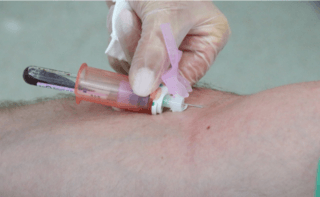
There are several techniques that can be used to anchor a vein. One common technique is to apply gentle pressure to the area surrounding the vein, which can help to stabilize it and make it more visible. Another technique is to use a tourniquet, which is a device that is placed around the arm or leg to constrict blood flow and make the vein more visible and accessible.
In this write-up, we will be discussing the importance of anchoring the vein, the easy and right way to do it, and why you should use a
vein finder for it. Let’s get into it.
What Does It Mean To Anchor A Vein?
Anchoring the vein is one of the key steps during a venepuncture and phlebotomy procedure. It means to secure the vein. Why do you need to secure the vein after you have punctured it?
Well, anchoring prevents the vein from rolling. The veins we have in our bodies are not fixed. So, it means they can move. When you puncture a vein, the chances of the needle moving the vein are pretty high. This process of the vein moving aside is called rolling the vein. Rolling veins can hinder the medical procedure.
As a result, the needle inside the vein can move and cause an unwanted tear or puncture. It will lead to a failed venepuncture and phlebotomy procedure.

To prevent the
vein from rolling, a medical professional need to learn how to anchor veins properly.
Another important thing you should know is, just anchoring the vein is not enough. You will also need to anchor the needle after it is inside the vein, otherwise, it can cause the vein to roll again.
Seeing an accurate image of the vein helps the medical professional to stabilize it or anchor it correctly. It is why using a vein finder can reduce the chances of the veins rolling vastly.
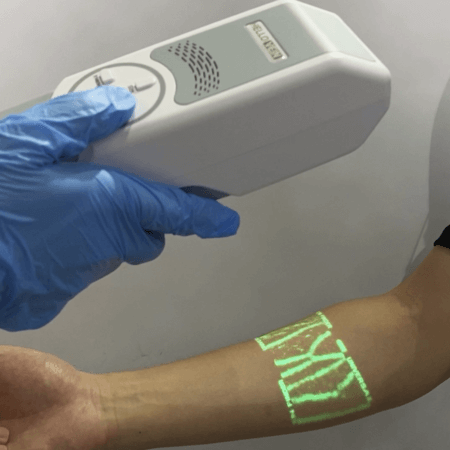
How Do You Anchor A Vein?
The process of anchoring the vein is pretty simple. However, it is very important and every medical professional should know how to do it. Below are the steps that will help you successfully anchor a vein.
How to anchor the vein:
- The first step of venepuncture is always locating the vein. If you are working with a tourniquet, then tie it at least 3 inches above the selected site.
- Hand the patient a soft kneading object or ask them to make a fist.
- Now clean the area of the venepuncture.
- Tightly grab the below area of the puncture; if you are drawing blood then grab the lower portion of the arm.
- Now stretch the skin downwards with the thumb of your other hand. This will stop the vein from rolling. By stretching the skin slightly, you are putting just the right amount of pressure to stop the vein from rolling aka anchoring it.
And by putting the pressure below the site of the venepuncture, you are leaving just enough space for the needle to do its job properly. In addition, stretching the skin makes it easier to puncture the skin.
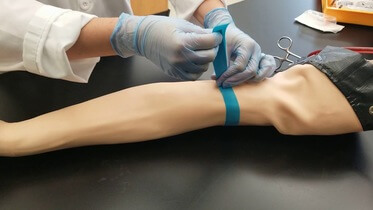
6. With your dominant hand, use your index finger and your ring finger to keep the syringe or the tube steady while also ensuring a subtle pressure on the vein. This will ensure a stable blood draw as well as make sure the vein is not rolling.
7. If it has been more than 60 seconds then it is time to remove the tourniquet. Leaving the tourniquet on for too long can cause blood to pool over the venepuncture site.
This will lead to elevated or false results. So, when you are removing the tourniquet, it is important to ensure your needle is not moving. If it ends up moving it will cause the vein to roll. When removing the tourniquet, use your other hand to do so. Keep your dominant hand’s index finger and ring finger on top of the vein to ensure the vein is not rolling or the needle is not moving.
Tips On Anchoring The Vein Correctly
By now you have probably understood anchoring plays a very important role in venepuncture. Here are 7 tips that will help you to anchor better, and in the right way.
1. Ask the patient to extend their arms at 180 degrees. This will help the skin become naturally taut. It will also make the veins much more stable.
2. Always ask the patient to make a tight fist. Making a tight fist also allows the skin to be taut and stabilizes the vein greatly.
3. If you are a beginner then you can skip providing a soft kneading object to the patient during venepuncture. It is essential that the patient does not move as it can cause the vein to roll. Making a fist works better in this scenario.
4. If the patient is visibly nervous, then you can talk to them or ask them to do something to distract them. An anxious patient will be much more jittery than a calm and relaxed patient. When they are busy talking to you, both the venepuncture procedure and anchoring the vein will be much easier.
5. If you are using a
vein finder then the anchoring process will be slightly different as you don’t have to use a tourniquet. Tourniquets are used to get a clearer view of veins inside the body. They are tied a few inches above the selected site.
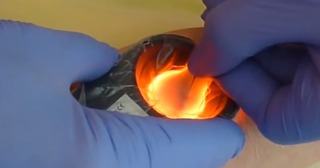
Tying a tourniquet prevents blood from moving inside the vein, as a result, the vein becomes larger and shows up. However, it is not recommended to keep a tourniquet on during blood draw for more than a minute as it can cause superficial results.
Due to the restriction in blood moving, blood can pool up where the tourniquet is.
So, the medical professional needs to remove the tourniquet in the middle of the venepuncture and phlebotomy procedure. This can cause unwanted movement leading to rolling veins.
Especially if the patient is nervous one, and keeps moving. Then the needle will move which will inevitably lead to the vein rolling. Without the usage of a tourniquet, you do not have to anchor the vein for a second time. Or worry about unwanted movement either.
6. You can try to feel the vein for a few seconds before proceeding with the needle. It will help you to assess the thickness of the vein and will also help you during anchoring.
7. If the patient has very saggy skin, you can ask for help from a colleague too.
Use Vein Finder Tool
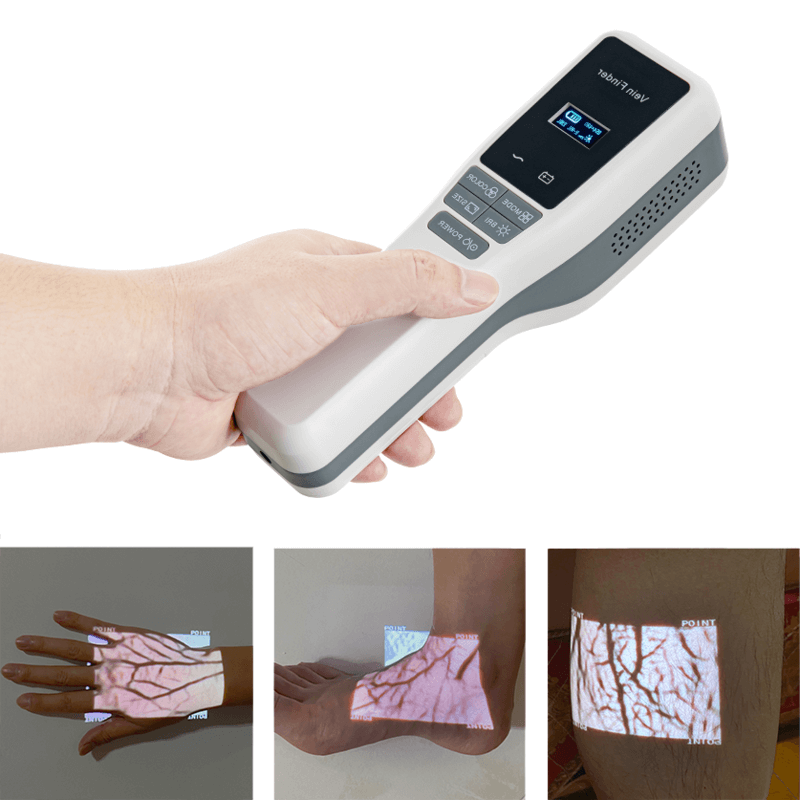
A
vein finder is a medical device that is used to aid healthcare professionals in locating veins. Vein finders work by using various technologies to highlight the location of veins, making them easier to locate and access. Hellovein Infrared vein finders use infrared light to locate veins. The device emits a beam of infrared light that is absorbed by the hemoglobin in the blood, making the veins more visible. Infrared vein finders are non-invasive and can be used on all skin types.
Using a vein finder has several benefits for healthcare professionals and patients. First, vein finders can help to reduce the number of failed IV insertions and blood draws. This can help to reduce patient discomfort and anxiety, as well as save time for medical professionals.
Second, vein finders can help to reduce the risk of complications associated with IV insertions and blood draws. When veins are difficult to locate, medical professionals may need to make multiple attempts to insert an IV or draw blood, increasing the risk of infection, bruising, and other complications. By using a vein finder, medical professionals can reduce the number of attempts needed to access a vein, reducing the risk of complications.
Finally,
vein finders can help to improve patient satisfaction by reducing discomfort and anxiety associated with IV insertions and blood draws. Patients who have had multiple failed attempts at accessing a vein may become anxious and apprehensive about future procedures. By using a vein finder, medical professionals can reduce the number of failed attempts, making the procedure less stressful for the patient.

Conclusion
Anchoring the vein correctly ensures a successful venepuncture procedure. Without venepuncture and phlebotomy, no medical treatment is complete. And without anchoring a venepuncture remains incomplete and unsuccessful.
If you use a
vein finder during a venepuncture procedure, the pressure of removing the tourniquet will no longer bother the medical professional. This will remove the need to do a second anchoring. So, why wait? Join the HelloVein family, use our HelloVein finder and achieve that comfort easily!






